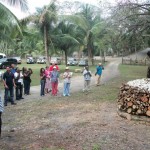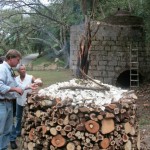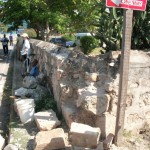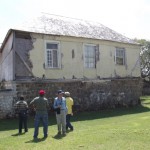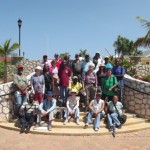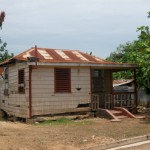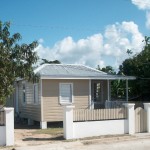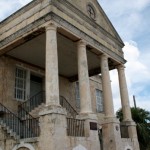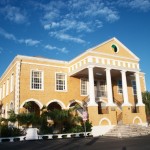One of the first things you notice when you enter the Falmouth Parish Church of St. Peter the Apostle (St. Peter’s), is its colorful stained glass windows. The most eye-catching one sits over the altar and is flanked by the Apostle’s Creed, the Lord’s Prayer and the Ten Commandments.

The first church in the parish of Trelawny and one of the oldest on the island, St. Peter’s was built in 1796 on land that the wealthy planter, Edward Barrett, donated. It was constructed from local limestone and bricks that were imported from Liverpool, England.
In addition to its original pulpit, baptismal font, and furnishings made of Jamaican mahogany, it was difficult to ignore the plaques lining the wall. Most date to the 1800s, and were mounted in memory of prominent people who were likely members of St. Peter’s.
Reading the inscriptions, I smiled at the qualities that were considered commendable back then – cheerfulness, sincerity, generosity, benevolence, piety, usefulness, integrity even a mild disposition – and at some of the phrases that sound so cumbersome and out-of-place now.
Here are a few the ones I found interesting:

In Memory of Samuel Earnshaw Esquire, of Colchis Estate in this Parish. A man of unassuming manners and unimpeachable integrity who from a spirit delighting in acts of generosity and benevolence. Distributed the blessings of life bestowed upon by the Divine Power, with a cheerful and liberal hand.
He died at his residence on 19th of September 1824. Affectionately deplored by his afflicted Wife. Regretted by his numerous friends and not unlamented by those, who personally unacquainted with him, yet were sensible of reputed worth and sincerity.


Sacred to the memory of The Honorable James Stewart, Custos Rotulorum and Representative in Assembly of this Parish, Judge of the Supreme Court and Major General of the Militia who departed this life on the 4th day of August 1828 aged 66 years.
He devoted his life to the public service of this his native country as a legislator. He was no less distinguished for his eloquence than for the wise policy of his measures. As a judge he adorned the seat of justice by the dignity of his character and the integrity of his decisions.
As chief magistrate of this parish, he endeared himself to its inhabitants not alone as the watchful guardian of the public peace
But as the beneficent promoter of their private interests and individual happiness and in testimony of the grateful feelings with which they revere his name they have erected this monument to his memory.

Linking up this week with Nancie’s Travel Photo Thursday at Budget Travelers Sandbox. Be sure to stop by and check out more photos and stories from around the world.

